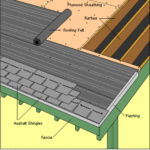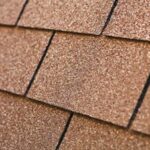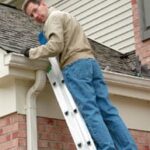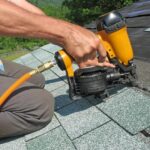Expert advice on how to repair an asphalt shingle roof, including repairing torn or curled asphalt shingles and replacing badly damaged shingles. Includes advice on how to stop a roof leak quickly.
The pitter-patter of rain on your rooftop can be a cozy sound if your home has a leak-free roof. But it’s a little different if that rhythm of the falling rain turns into a drip-drip from your ceiling. A leaky roof can be very unsettling because of the possible water damage to your ceilings, floors, and furnishings.
In this informative guide, we will help you repair your leaky asphalt or asphalt-fiberglass shingles—sometimes called “composition roofing”—like a seasoned roofing pro. We’ll show you the nitty-gritty of fixing or replacing curled, torn, or damaged asphalt roofing shingles. Then again, if climbing up on the roof and making DIY roof repairs isn’t your thing, we’ll help you hire a reputable roofer.
Whether you do it yourself or hire a pro, it pays to repair a leaky roof well before ceilings, walls, and floors are damaged. Check your roof for problems at least once a year before the storm season (and after a major storm, if necessary). You can hire a roofer to do a roof inspection for $100–300 (the average cost of a roof inspection is about $225).
Where Roof Leaks Occur
If your roof is leaking but you’re not sure where it’s leaking, please see How to Find & Fix a Roof Leak. Leaks often occur at the flashing in roof valleys or where pipes penetrate the surface. Seal pipes with silicone, and seal the connections between the roofing material and the flashing with asphalt roofing cement.
Also check for bald spots, cracks, or curled shingles. Small tears, cracks, and holes can be repaired, but missing or severely damaged shingles should be replaced.
 To test an asphalt shingle roof’s condition, bend over a corner of one or two shingles on the sunniest side of the roof; if they break rather than flex, or if they appear gray, the material is nearing the end of its serviceable life. A collection of mineral granules in gutters or at the base of downspouts indicates that the protective mineral surface of asphalt shingles is wearing away.
To test an asphalt shingle roof’s condition, bend over a corner of one or two shingles on the sunniest side of the roof; if they break rather than flex, or if they appear gray, the material is nearing the end of its serviceable life. A collection of mineral granules in gutters or at the base of downspouts indicates that the protective mineral surface of asphalt shingles is wearing away.
When your roof has multiple leaks or many damaged shingles, it usually means it’s time to replace the roofing entirely.
Quick Fix for a Roof Leak
If you know where a roof leak is, you can temporarily solve it quickly and easily with a 12-by-12-inch piece of galvanized sheet metal roof repair flashing, available at most home improvement centers.
Lift the damaged shingle with one hand while you slip the sheet metal flashing up underneath it to cover the hole.
It might be necessary to pry up one or more roofing nails in the row above the missing or damaged shingle so you can push the flashing all the way up under the course above the leak.
About Repairing a Roof Yourself
Although repairing or replacing asphalt shingles on a low-pitched roof is a relatively easy job for experienced do-it-yourselfers, be sure you can work safely and comfortably on your roof before you decide to make your own repairs.
Working on top of a roof can be challenging and dangerous. Unless your roof’s pitch is relatively low and you have the necessary experience, tools, and confidence to get the job done safely, you should leave this work to a professional roofer. In this case, please see our affiliate partner, HomeAdvisor, to receive free bids from local asphalt shingle roof repair pros. Make sure the roofer you hire is licensed, bonded, and insured. Also be sure they have positive customer reviews and a proven track record.
If you do decide to do your own work, use good ladder and rooftop safety practices. Do roof repairs on a clear, warm day, when both the roofing material and roofing cement will be more pliable. Take your time and stay safe!
How to Repair a Torn or Curled Asphalt Roofing Shingle
It’s important to fix or replace torn or curled asphalt shingles before the problem gets severe enough to permit leaks or the pieces break apart and blow off the roof.
If you have leftover replacement shingles that match your roof, replacing the whole damaged shingle will result in a better, less noticeable repair than trying to fix it. For more about replacing a shingle, please see below: How to Replace a Damaged Asphalt Shingle

Whenever you install a new roof, be sure to store a few extra shingles so you’ll have matching replacements for repairs later.
If you don’t have close-match replacement shingles for your roof, repairing a torn or curled shingle is your best option.
Here’s how to repair a torn asphalt shingle:
- Carefully lift the torn piece or damaged corner, and, using a putty knife, spread a layer of asphalt roofing cement under it. Be careful not to smear the cement on exposed portions of roofing.
- Tack down a curled corner with one roofing nail. If you are repairing a tear, tack down the two torn halves with two roofing nails on each side of the tear.
- Carefully apply roofing cement over the crack and on top of the nailheads to seal up any potential leaks. Keep the amount of cement to a minimum—this will be visible on the surface of your roof.
How to Replace a Damaged Asphalt Shingle
When an asphalt shingle is beyond simple repair, it’s best to replace it. Asphalt shingles are relatively easy to replace, but the repair may stick out like a sore thumb if you don’t have an exact replacement for your type of roofing.
When you visit a roofing dealer or home improvement center, take along a small, broken piece of the shingle to help you find a good match.
If you can’t find a suitable replacement and the repair will be on a highly visible part of the roof, you might want to consider stealing a replacement shingle from a hidden area of the roof and replacing that one with the new, poorly-matching replacement shingle. Obviously, this involves a little more work, but it may be worth the effort in order to avoid an unsightly repair.
To remove and replace a damaged shingle:
- Use a flat pry bar to gently lift the two shingles directly up-roof from the damaged one. Break the sticky black, self-sealing strip that holds the shingles in place by sliding the pry bar along the length of each shingle.
- Raise the shingle tabs, and carefully pry up the nails holding the damaged shingle and the shingle directly above it (this means you’ll have to go two shingles up-roof).
- Slide out the damaged shingle. If it’s still in one piece, hang on to it for sizing the replacement.
- With a utility knife, cut off a small piece from the top corners of the replacement shingle, and then slide the shingle into position under the existing shingles, being careful not to tear the roofing felt.
- Nail the new shingle in place with galvanized roofing nails, hammering against a pry bar placed on the nailheads, under the shingle above (hit the pry bar with the hammer so you don’t damage the shingle). Cover the nailheads with asphalt roofing cement, and spread a little extra cement beneath the tabs that you folded back to help glue them down.
Ridge and Hip Shingles: Don’t remove a slightly damaged shingle from ridges. Instead, nail each corner of the existing shingle in place and cover it with a new one.
Likewise, if a ridge or hip shingle is damaged, nail down each corner with roofing nails, and apply a second shingle over the top after first coating the bottom of that shingle with roofing cement. Nail down the corners, and cover the roofing nailheads with asphalt roofing cement.
Featured Resource: Find a Pre-Screened Local Roofing Contractor



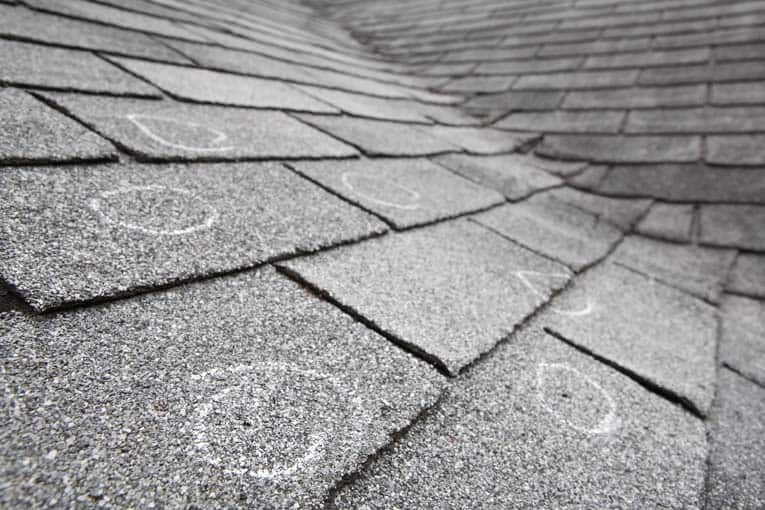
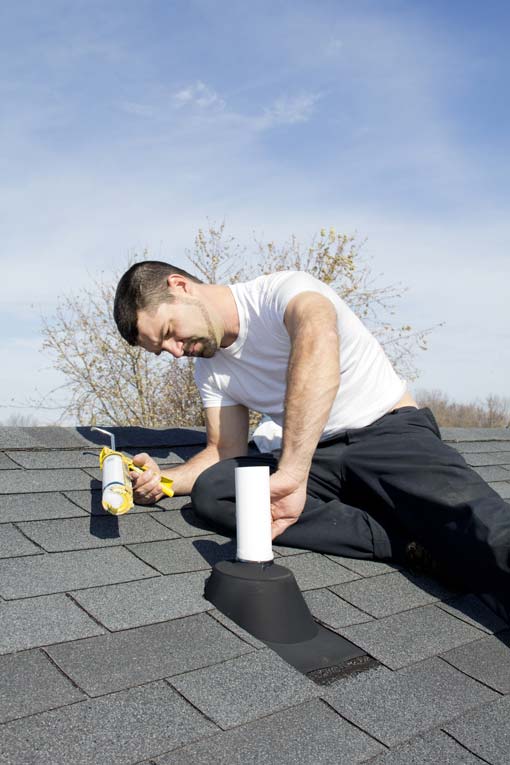
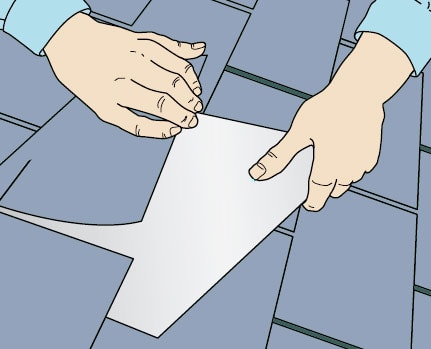
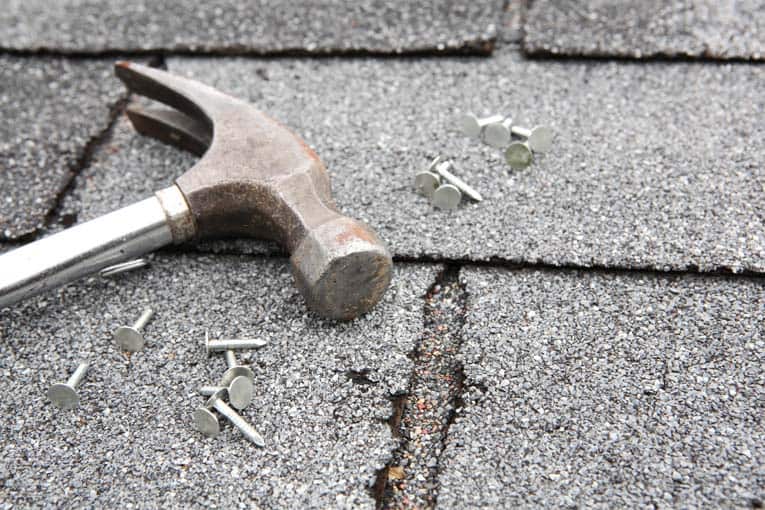
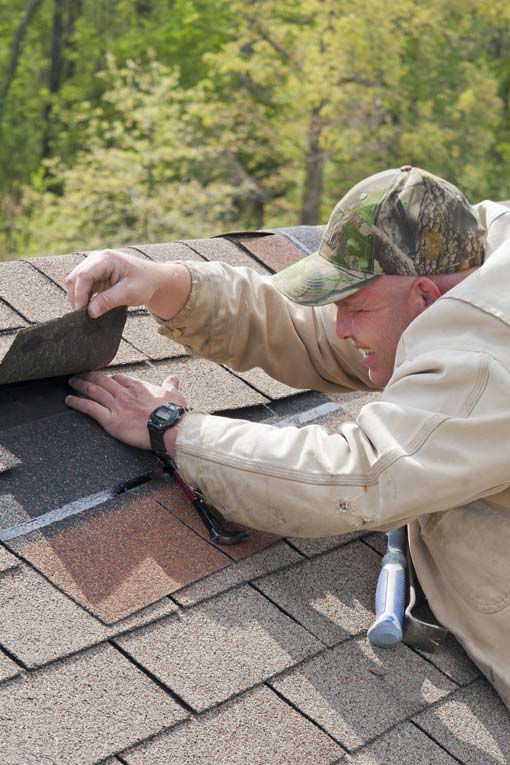
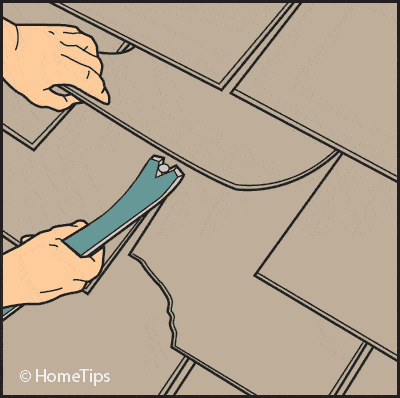
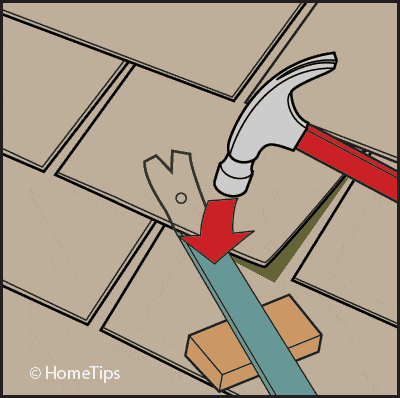




 Don Vandervort writes or edits every article at HomeTips. Don has:
Don Vandervort writes or edits every article at HomeTips. Don has:
